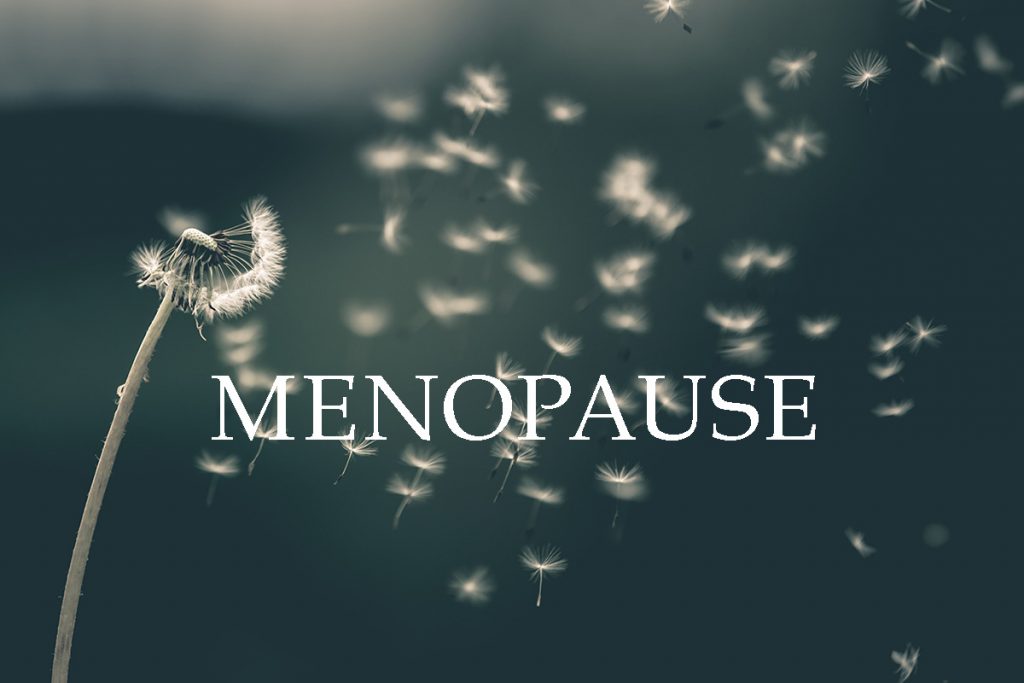What is Menopause?
Menopause, famously known as the change marks the end of the reproductive years. A woman is officially in menopause when:
- A woman has not had a period for at least twelve months
- Her bloodwork reflects that permanent shift in hormone levels.
The average age of women entering their Menopause phase in the United States is 51. The pituitary gland and the hypothalamus continue to produce hormones during menopause, but the ovaries are no longer able to produce enough estrogen to ovulate. By and large, the medical community still continues to treat menopause as an age-related disease, like high blood pressure, rather than a natural transition from one lifecycle to another. Many medical professionals still have the misconception that menopause is simply caused by lack of estrogen, and once a woman enters menopause, her ovaries turn off like a light switch and stop producing hormones. This is not true at all: the ovaries of many menopausal women are still producing 20-40% percent of the estrogen they produced during pre-menopause.
Typically, 85% of menopausal women have significantly low estrogen, and 100% of women have low testosterone. For the 15% of women still continuing to make adequate levels of Estradiol (E2) — however, this is a big red flag. When a menopausal women says that her transition into menopause, “Wasn’t that bad,” and that she did not experience night sweats or hot flashes, it indicates that some of her estrogen levels are still adequate; however, without the anti-proliferative effects of progesterone to balance that estrogen, this puts her at increased risk of breast, uterine (endometrial) cancer. Even though a menopausal woman’s ovaries are producing less and less estrogen, the fall of progesterone levels is proportionately much greater, causing a condition of estrogen dominance. In addition, the adrenal glands and body fat also produce some estrogen (through an enzymatic process that converts adrenal steroids to estrogen). Being ten pounds or more overweight can sometimes be a contributing factor to high estrogen levels.
Symptoms of estrogen dominance and low progesterone during menopause include:
- Vaginal dryness
- Hot flashes
- Hair loss
- Night sweats
- Depression
- Mood swings
What is Estrogen Dominance?
Estrogen dominance does not necessarily mean that the body produces too much estrogen. During menopause, the ovaries’ estrogen production typically shifts into low gear, unless other factors are at play. Rather, estrogen dominance means that your body’s estrogen production is not in balance with your progesterone production. Estrogen dominance occurs when your ovaries continue to produce a little estrogen but produce significantly less progesterone. All women experience this change, at varying levels — it is a natural process of your aging ovaries. To understand estrogen dominance, you have to understand the role of progesterone, as well. Estrogen and progesterone operate like sides of a seesaw, shifting up and down during a woman’s monthly cycle.
Symptoms of low progesterone include:
- Poor sleep
- Fatigue
- Low energy
- Anxiety
- Heavy periods
- Low libido or sex drive
- Weight gain
- Uterine fibroids
- Irritability and even rage.
When the progesterone side of the seesaw gets stuck on the ground, the estrogen side is elevated, relative to progesterone. It’s not necessarily that your estrogen is high — it’s that your progesterone level drops so low that estrogen effectively dominates.

Other Factors that Contribute to Hormone Imbalance
A shift in hormones produced by the adrenal glands also begins in Menopause. DHEA levels that peaked in your twenties begin to slowly and steadily decline, dropping approximately 10 percent every decade. Some medical studies correlate the decline in DHEA production with many of the degenerative changes seen in women and men, such as heart disease, cancer, and osteoporosis.
Birth control pills can also create a relative testosterone deficiency. Taking birth control pills causes your levels of the hormone-carrying protein sex-hormone binding globulin (SHGB) to rise. These higher levels of SHGB, in turn, bind up the levels of free testosterone circulating in your blood, resulting in a condition of relative testosterone deficiency. Although your levels of testosterone may (or may not) appear within normal limits on a blood test, the amount that is available for use by your tissues is far lower than what is needed.
The result for you: symptoms of low testosterone, which include:
- Low libido
- Low energy
- Poor memory
- Fatigue
- Depression
- Apathy.
How Can I Restore Hormone Balance During Menopause?
Dr. Randolph has created specific guidelines to help you determine your individual supplementation needs, depending on your age, menstrual history, symptoms, and hormone test results. Recommended supplements for treatment of hormone balance during menopause are based on specific criteria, including:
- Age range
- Life cycle and associated hormone level shifts
- Type of imbalance
- Medical condition
- Common symptoms.
All hormonal supplements are bioidentical formulations that duplicate the natural physiology of hormones in the body. Ingredients as listed are derived from natural and/or plant-based substances.
What Can I Expect from Treatment for Menopause?
The answer is simple: relief from unwanted symptoms! You should expect improved and renewed:
- Libido
- Moods
- Memory
- Sleep
- Strength
- Energy
- More efficient weight loss
When or if symptoms persist, adrenal support (to manage stress), additional bioidentical hormone supplementation, and/or a compounded formulation may also be required.





